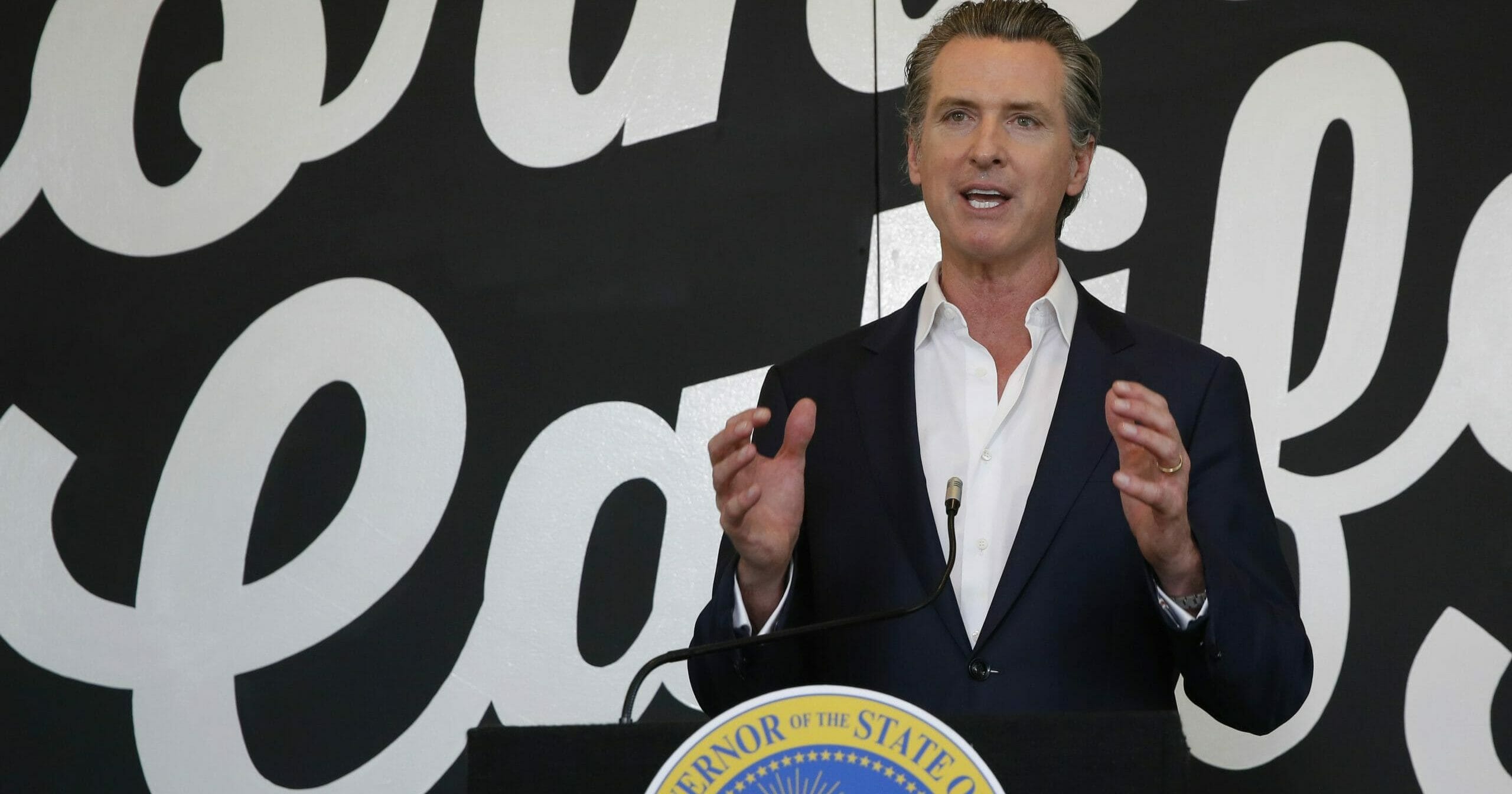
California Headed for Whopping $54.3 Billion Budget Deficit
California will have a budget shortfall of $54.3 billion because of the economic devastation wrought by the coronavirus, Gov. Gavin Newsom’s administration announced Thursday, a stunning reversal for a state that had a $21 billion surplus a year ago.
The state has been under a mandatory stay-at-home order since mid-March, forcing nonessential businesses to close and prompting more than 4 million Californians to file for unemployment benefits.
After recording record-low unemployment of 3.9 percent at the start of the year, the Newsom administration now predicts a jobless rate of 18 percent for the nation’s most populous state — 46 percent higher than the height of the Great Recession a decade ago.
Newsom hinted at the bleak numbers on Wednesday when he called the unemployment figures “Depression-era numbers.”
“These numbers are jaw dropping,” Newsom said. “I just hope that people are preparing themselves … for the effort that we all need to engage together to undertake to unwind that and get back on our feet.”
It’s not yet clear what state programs will be cut or by how much. Newsom is scheduled to reveal his new spending proposal next week.
But the revenue shortfall means the state’s constitutionally required funding level for public schools and community colleges will fall by $18.3 billion.
The virus-induced business closures, unemployed workers and cratering of the restaurant, tourism and entertainment industries has resulted in a staggering loss of tax revenue for California.
The Newsom administration projects personal income will fall by close to 9 percent for the state’s nearly 40 million residents while permits for new housing construction — a key measure of the economy’s health — will drop more than 21 percent.
After facing budget deficits of more than $40 billion following the Great Recession, California lawmakers have been saving money for the next economic downturn to try and avoid a repeat of cuts to state services. For the past 10 years, the state has had an unprecedented run of economic growth, adding more than 3.4 million new jobs.
That led to increased state spending and huge budget surpluses in recent years, pushing the state’s “rainy day fund” to more than $16 billion. But the projected budget shortfall announced Thursday is nearly three-and-a half times that number, dispelling any notion of a quick recovery once the state’s coronavirus restrictions are lifted.
The Newsom administration estimates state general fund revenues will decline by $41.2 billion compared to the $222.2 billion spending proposal Newsom revealed in January.
Plus, California must pay for an extra $7.1 billion for increased enrollment in some social safety net programs, including Medicaid, the joint state and federal health insurance program for the poor and disabled.
Another $6 billion in anticipated emergency spending on the coronavirus for things like protective gear, hotel rooms for the homeless and cash payments for low-income adults living in the country illegally pushes the projected deficit past $50 billion.
Meanwhile, lawmakers are already being asked to bail out the state’s essential industries.
California hospitals say they have lost up to $14 billion by postponing elective surgeries and other procedures to make room for an anticipated surge of coronavirus cases that never happened.
On Monday, the California Hospital Association asked lawmakers for more than $1 billion in aid.
Local governments, reeling from disappearing sales and hotel tax revenue as millions of people stay inside, are also asking lawmakers for billions in aid.
California already is in line to receive more than $26 billion in federal aid because of the coronavirus, according to an analysis by the nonpartisan Legislative Analyst’s Office.
But in a memo released Thursday, the Newsom administration says the state’s bleak financial outlook “underscores the necessity of further federal stimulus to help states and local governments.”
“The next few years we’re going to have to work through these challenges,” Newsom said Wednesday. “But we’ll work through them. And we’ll get out the other side.”
The Western Journal has reviewed this Associated Press story and may have altered it prior to publication to ensure that it meets our editorial standards.
Truth and Accuracy
We are committed to truth and accuracy in all of our journalism. Read our editorial standards.
Advertise with The Western Journal and reach millions of highly engaged readers, while supporting our work. Advertise Today.












